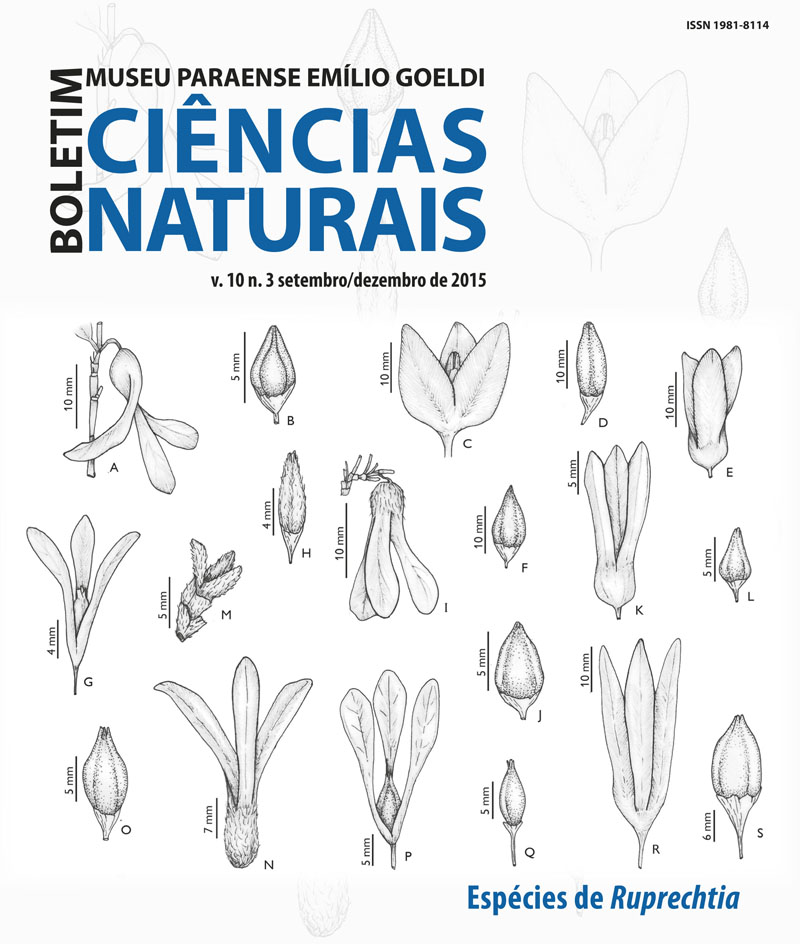Richness and relation of ligninolytic poroid fungi (Agaricomycetes) with the substrate in the Brazilian Amazon forest
DOI:
https://doi.org/10.46357/bcnaturais.v10i3.475Keywords:
Amazon biome, Basidiomycota, Ecology, Decomposition, DiversityAbstract
Preview studies indicate that fungi diversity in a specific area is directly affected by the forest age, vegetation composition, and quality of the substrate. However, the relation of fungi with the substrate in tropical forests is not yet clear. In this direction, this work has the objective to evaluate the richness and density of Ligninolytic poroid fungi, and their relation with woody debris (substrate) in a four field trips were undertaken, and the measurements were made in 10 transects (800 x 4 m) in one of the sites of the Amazon Biodiversity Program (PPBio), in the Caxiuanã National Forest (Pará). Fifty-two species of Ligninolytic poroid fungi were identified, which were distributed in twenty genera and six families. Most of the founded species were considered rare (61.5%), and do not presenting any preference for decomposition stages. The number of occurrences and species of the mushroom substrate was higher in families belonging Caesalpiniaceae and Mimosaceae, with smaller diameter (2-10 cm). Community of poroid fungal in the Caxiuanã area is affected by the amount of substrate, but is not due to quality of the substrate.
Downloads
Published
Issue
Section
License
Publication means fully assigning and transferring all copyrights of the manuscript to the journal. The Liability Statement and
Assignment of Copyrights will be enclosed with the notice of acceptance. All the authors must sign the document and return it to the journal.








